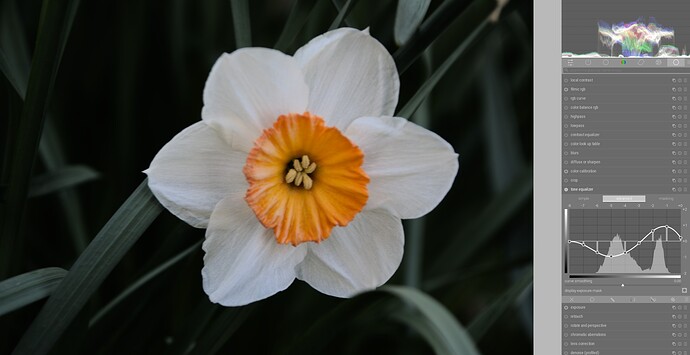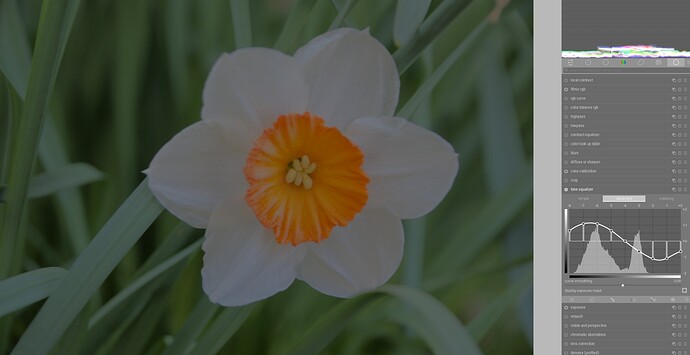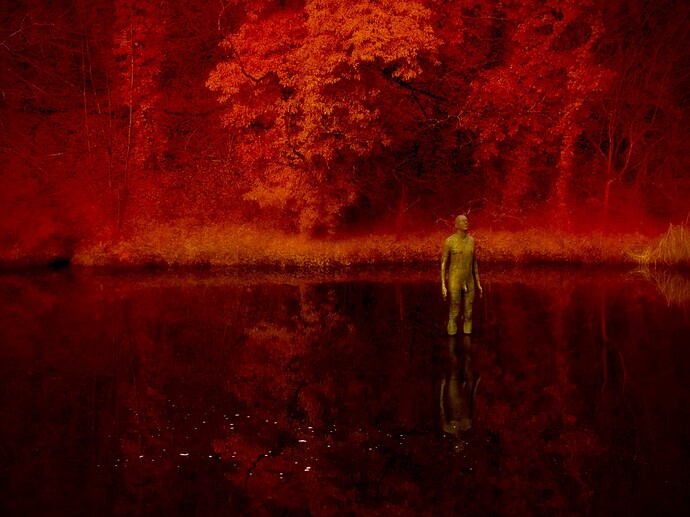When Preserve Detail is turned on, the local contrast in the area is preserved regardless of whether you darken or lighten the area.
When preserving detail is turned off, and if you want to add contrast…
…besides increasing the contrast, local contrast is also increased
Here for comparison the same curve with preservation of details switched on:
If you do it the other way round, compressing shadows and highlights, in difference to switched on preservation of details, besides the contrast also the local contrast will be reduced.
Without preservation of details:
With preservation of details:
According to this logic, if you want to treat only the highlights, you use preservation of details for darkening and no preservation of details for lightening.
Example. I only want to darken the flower in this photo:
Preserving details is on and the mask looks like this:
If I now darken the area, the details (local contrasts) are preserved:
If I switch off the preservation of details, the mask looks like this:
And if I now darken the area, I lose the local contrast on the flower:
Now let’s see what happens when we lighten the flower. Initial photo:
With preservation of details. Local contrast - as expected - remains as it is:
Without preservation of details. Local contrast is enhanced:
Yes and no. This is a choice of different algorithms, and which one fits always depends on the scene. You can find out relatively easily by trying them out.
Yes, because the conversion takes place before the filmic and is therefore not influenced by chroma preservation.



























